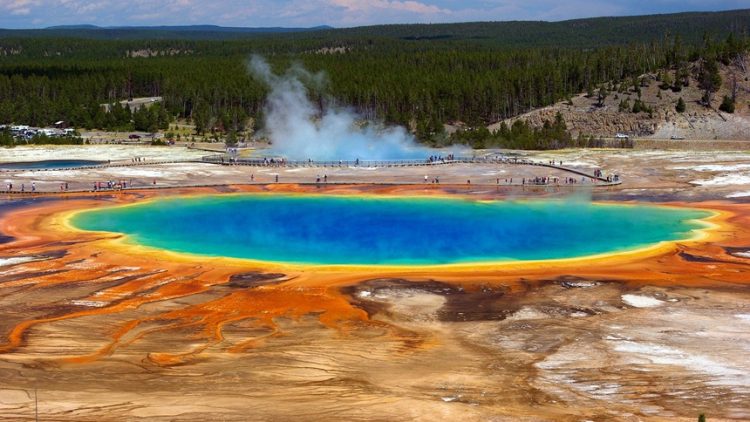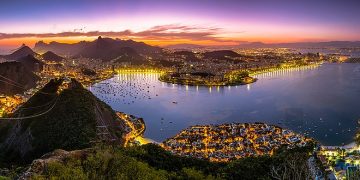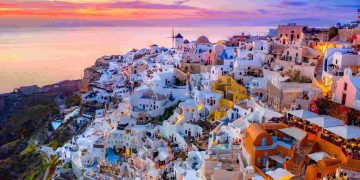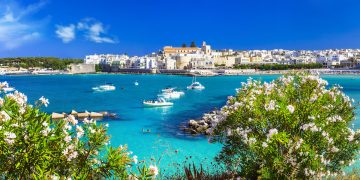Yellowstone National Park, established in 1872, is not only the first national park in the United States but also widely regarded as the world’s first national park. Spanning over 2.2 million acres across the states of Wyoming, Montana, and Idaho, Yellowstone is a place of unmatched natural beauty, geological wonders, and diverse ecosystems. With its dramatic landscapes, stunning geothermal features, and abundant wildlife, the park draws millions of visitors each year. This article explores the incredible natural scenery of Yellowstone National Park, delving into the unique features that make it one of the most breathtaking places on Earth.
1. The Geothermal Marvels of Yellowstone
Yellowstone sits atop one of the largest active volcanic systems in the world, and this geothermal activity shapes much of the park’s iconic scenery. The park contains over 10,000 geothermal features, including geysers, hot springs, mud pots, and fumaroles, making it a geological treasure trove.
Old Faithful and the Geyser Basins
Old Faithful, perhaps Yellowstone’s most famous geyser, erupts with remarkable regularity, shooting water up to 180 feet into the air every 90 minutes on average. Surrounding Old Faithful are expansive geyser basins, including the Upper Geyser Basin, home to over 150 geysers, more than anywhere else on Earth.
- Grand Prismatic Spring: With its vivid hues of orange, yellow, green, and blue, this hot spring is the largest in the United States and one of the most photographed sites in the park.
- Steamboat Geyser: The world’s tallest active geyser, it can erupt to heights of up to 300 feet, though its activity is far less predictable than Old Faithful.
Mammoth Hot Springs
Mammoth Hot Springs is renowned for its limestone terraces, which are formed by calcium carbonate deposited by hot water. The terraces’ surreal, cascading appearance changes continuously due to shifting geothermal activity, offering a dynamic natural display.
2. The Dramatic Landscapes of Yellowstone
The Grand Canyon of the Yellowstone
Carved by the Yellowstone River, this stunning canyon stretches 20 miles and plunges up to 1,200 feet deep.
- Lower Falls: At 308 feet, the Lower Falls is nearly twice the height of Niagara Falls and is a must-see landmark. The surrounding canyon walls, painted in shades of red, yellow, and orange, showcase the park’s volcanic history.
- Artist Point: This viewpoint offers one of the most iconic vistas in the park, with the river winding through the colorful canyon below.
Towering Peaks and Plateaus
Yellowstone’s mountain ranges, including the Absaroka, Gallatin, and Beartooth ranges, frame the park with rugged peaks and sprawling alpine meadows. These mountains not only provide spectacular scenery but also host a variety of ecosystems.
Lamar Valley and Hayden Valley
Known as the Serengeti of North America, Lamar Valley is a haven for wildlife viewing. Wide, open expanses surrounded by hills and mountains make it an idyllic spot for observing herds of bison, elk, and pronghorn. Hayden Valley, located along the Yellowstone River, offers similar opportunities with the added beauty of lush wetlands and meandering waterways.

3. Yellowstone’s Lakes and Rivers
Yellowstone Lake
At over 136 square miles, Yellowstone Lake is the largest high-altitude lake in North America. Surrounded by forested hills and mountain peaks, the lake’s cold, clear waters are a serene centerpiece to the park. The West Thumb Geyser Basin, located along the lake’s shore, features geothermal activity visible both above and below the water.
The Yellowstone River
The lifeblood of the park, the Yellowstone River is the longest undammed river in the contiguous United States. Its powerful flow shapes the Grand Canyon of the Yellowstone and supports a diverse range of aquatic life.
Shoshone Lake
Accessible only by foot or boat, Shoshone Lake is a pristine wilderness area, offering tranquility and stunning reflections of the surrounding landscape.
4. Diverse Wildlife in Natural Habitats
Yellowstone’s vast and varied ecosystems support a remarkable array of wildlife, making it one of the best places in North America for animal observation.
- Bison: The park is home to the largest free-roaming herd of bison in the U.S. Watching these majestic animals roam the plains is a quintessential Yellowstone experience.
- Grizzly and Black Bears: Yellowstone is one of the few places in the lower 48 states where visitors can see grizzly bears. Black bears are also commonly spotted.
- Wolves: Reintroduced to the park in the 1990s, wolves have become a symbol of Yellowstone’s commitment to ecological restoration. The Lamar Valley is a particularly good place to see these elusive predators.
- Birdlife: From bald eagles to trumpeter swans, Yellowstone’s waterways and forests provide a haven for bird enthusiasts.
5. Seasonal Beauty and Ever-Changing Scenery
Each season in Yellowstone offers a unique perspective on its natural beauty:
- Spring: Melting snow gives rise to roaring waterfalls and blooming wildflowers. Wildlife is abundant as many animals emerge from hibernation.
- Summer: The park’s busiest season, summer brings long days and warm temperatures, perfect for hiking and exploring.
- Autumn: Fall colors transform the valleys and forests, creating a photographer’s dream. It’s also the season for elk rutting, a fascinating wildlife event.
- Winter: Blanketed in snow, Yellowstone becomes a serene wonderland. Cross-country skiing, snowshoeing, and wildlife tracking in the snow offer unique experiences.
6. Preservation and Challenges
Yellowstone’s natural scenery is not just a source of wonder but also a reminder of the importance of conservation. Climate change, invasive species, and increasing visitor numbers pose challenges to the park’s ecosystems. Efforts by the National Park Service and organizations like the Yellowstone Forever Foundation aim to ensure the park’s beauty endures for future generations.
Conclusion
Yellowstone National Park’s natural scenery is a masterpiece of geology, ecology, and beauty. From its awe-inspiring geothermal features and majestic landscapes to its rich wildlife and seasonal charm, Yellowstone captures the imagination of all who visit. It stands as a testament to the power and fragility of nature, reminding us why preserving such places is crucial. So, why is Yellowstone considered a natural wonderland of the world? The answer lies in its unparalleled ability to inspire awe, foster connection with nature, and serve as a sanctuary for the wild.





















